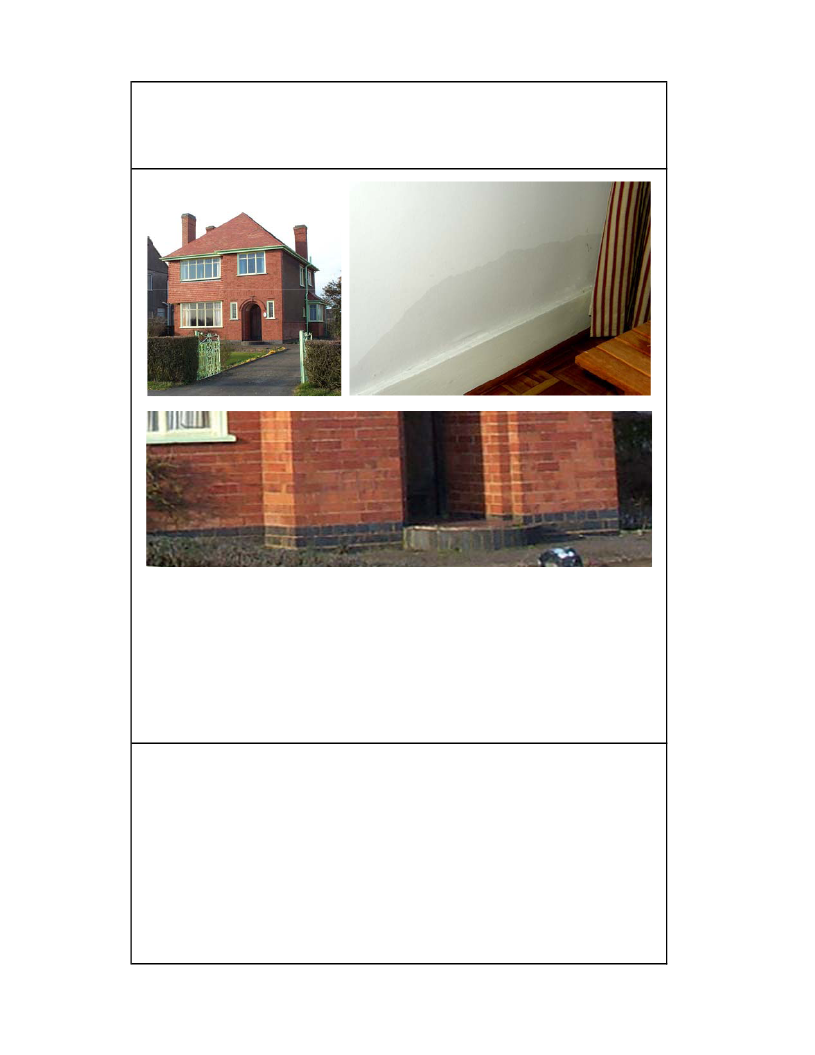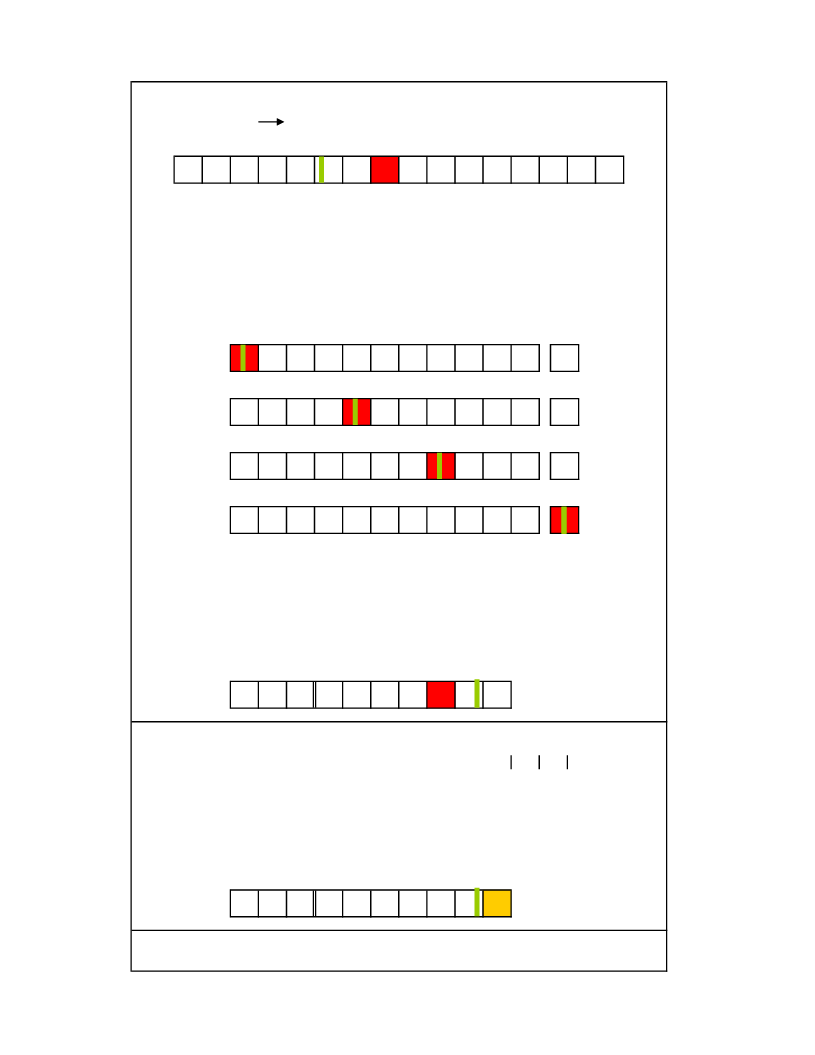
HHSRS VERSION 2
SEPTEMBER 2004
DAMP AND MOULD
Persons aged under 15 years
Excess Cold
Vulnerable age
Related hazards
Front elevation
HHSRS VERSION 2
Multiple locations
Yes
No
Secondary hazards
Yes
No
Damp in rear dining room
Damp proof courses near front door
DESCRIPTION OF HAZARD⁄S
Dwelling:
1930s detached, 4 bedroomed house
Background: This is a four bedroomed detached house built in the late 1930s in a low lying area
that has a high water table. The front of the house faces south.
A) Damp proof course:- The damp-proof course comprises three layers of 'staffordshire blue' bricks
laid in cement mortar. However, along the left hand side wall near the rear corner of the house, the
cavity wall is bridged by debris. This problem is exacerbated by the garden having been built up
on this side of the house to just above the top of the layers of blue bricks. Together these problems
are giving rise to serious rising damp behind and above the skirting board in the rear living room.
A
3
-
-
A
-
-
Plumbing⁄waste pipes
Rain water goods
Roof⁄sub-floor spaces
Small room sizes
LIST OF RELEVANT MATTERS
LIKELIHOOD & OUTCOMES
1
Rising damp
2
Penetrating damp
3
Condensation
4
Mould growth
a
Energy efficiency
b
Background ventilation
c
Extract ventilation
d
Clothes drying facilities
e
Damp proofing
f
Disrepair
g
Exposed water tanks etc
h
Water using appliances
I
j
k
-
A
-
-
-
l
-
-
-
-
3
2
-
-
# Secondary hazards
-
None
-
-
Key
3
Seriously defective
2
Defective
1
Not satisfactory
-
Satisfactory⁄NA

Av: 10.0
10.0
A B C D E F G H
I
J
Lowering the garden path alongside the side wall to below the three layers of
staffordshire blue bricks is likely to reduce the amount of rising damp considerablely.
However, to cure the problem completely, the cavity needs to be cleaned out and the
DPC restored. Curing the dampness totally would reduce the rating to better than the
average for the national stock.
Av: 12 Improved
Justification
NEW RATING
Av: Nos
RATING SCORES AFTER IMPROVEMENT
IMPROVE
Likelihood to
1 in 5,600
Outcomes to
0.0
1.0 10.0 89.0
%
Score:
48
A B C D E F G H+ I
J
Average: 12
Example
As there is no associated mould growth, the outcomes are no worse than average.
However, notwithstanding the average outcomes, the high likelihood gives a HHSRS
score above average and a rating band of H plus.
< 0.05 0.15
89.0
0.3
0.7
1.5
3
7
15
26
38 >
Av: 89.0
89.0
0.3
0.7
1.5
3
7
15
26
38 >
Score:
< 1
0.3
0.7
1.5
3
7
15
26
Av: 1.0
1.0
%
0.0
38 >
1.0
38 >
10.0
0.3
0.7
1.5
3
7
15
26
Average: 0.0
0.0
< 0.05 0.15
< 0.05 0.15
< 0.05 0.15
Although representing a serious problem of rising damp, the damp is confined to the
living room. The house is also reasonably well heated, having gas fired central heating,
and is well ventilated. There is no associated mould growth. Consequently, although
inconvenient and unsightly, the risk to health is relatively small. Nevertheless, the
likelihood is higher than average, most housing having no serious problems of damp in
the living room or elsewhere.
Justification
OUTCOMES
Class I
Class II
Class III
Class IV
Justification
RATING
130
75
42
24
13
7.5
4
< 4200 2400 1300 750 420 240
1 in
100
2.5
1.5 >
Low
High
Average: 400
Example
100
LIKELIHOOD
HHSRS VERSION 2
SEPTEMBER 2004
HEALTH AND SAFETY RATING SYSTEM SCORES
1920-45 House
Average likelihood, outcomes and HHSRS score for hazards from damp & mould by
persons aged under 15 years in 1920-45 non-HMO and all dwellings,1997-99.